eBay Historical GPU Prices 2023: November 2023 Update
Here are the charts for Mar 4–11, 2021. We've gathered data on 61 different GPUs, which we'll organize into groups based on the GPU generations.
Ampere and RDNA2 Graphics Cards




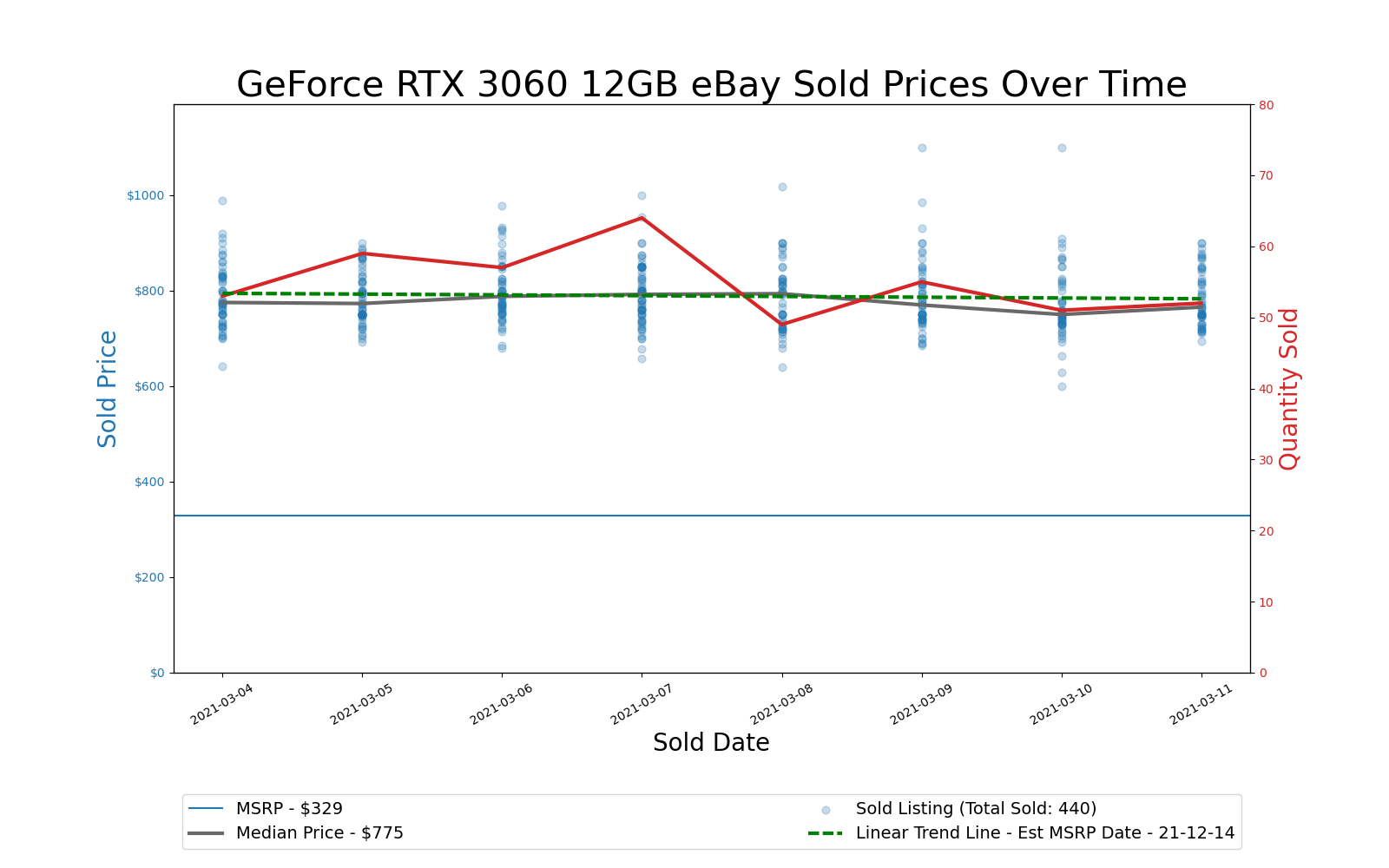



The latest generation graphics cards from AMD and Nvidia see the most demand, from gamers and miners alike. More people want the 'best' option available, and shiny new hardware tends to meet that requirement more than dusty cards from yesteryear. With retail supplies still limited, everything continues to sell for far above the official launch prices.
Not much has changed here, and after a slight downward trend a week ago, several of the cards went back up in average eBay pricing. RTX 3090, 3080, and 3060 Ti show the steepest upward slopes, while the new RTX 3060 12GB and AMD RDNA2 cards are all headed in the right direction (down) — but they're not getting back to MSRP any time soon.
Total numbers of each GPU sold (on eBay) continue to strongly favor Ampere over RDNA2, and the RTX 3060 12GB at comes in as the second most popular card in this group. Interestingly, RTX 3090 actual outsold RTX 3080 for a change, as well as the RTX 3060 Ti. Also, RTX 3090 sold as many units alone as the three RDNA2 cards combined — though retail sales (i.e., not eBay) could be very different.
Turing and RDNA1 Graphics Cards









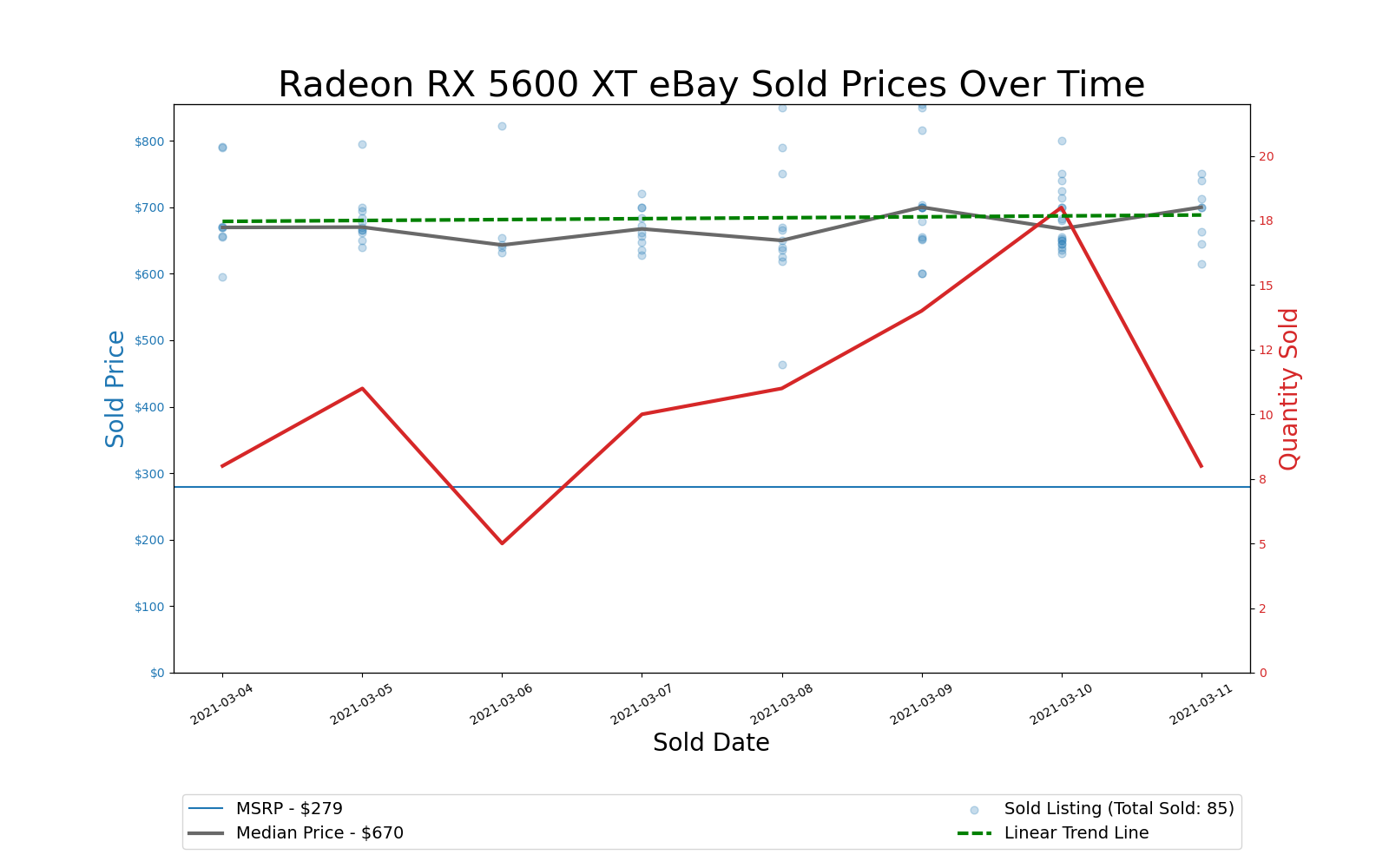







The previous generation Turing and RDNA1 cards are now coming up on two, sometimes three years old. Prices remain severely inflated on these cards, with all of them above their original MSRPs. As above, most cards are showing generally flat pricing trends, with a few exceptions. It's particularly surprising to see the GTX 1650 and 1650 Super — cards with 4GB VRAM that really aren't much good for mining — selling at such high prices.
AMD's RX 5700 XT and RX 5600 XT continue to be popular GPUs. The 5700 XT ranks as the highest selling AMD card, with a massive lead over the RX 5700. We have to assume there just weren't that many vanilla 5700 cards produced, which makes sense considering both use the same Navi 10 die. Those that couldn't make it as a full RX 5700 XT apparently ended up in the RX 5600 XT more often than not, at least in the later days of Navi 10.
Pascal, Vega, and Polaris Graphics Cards



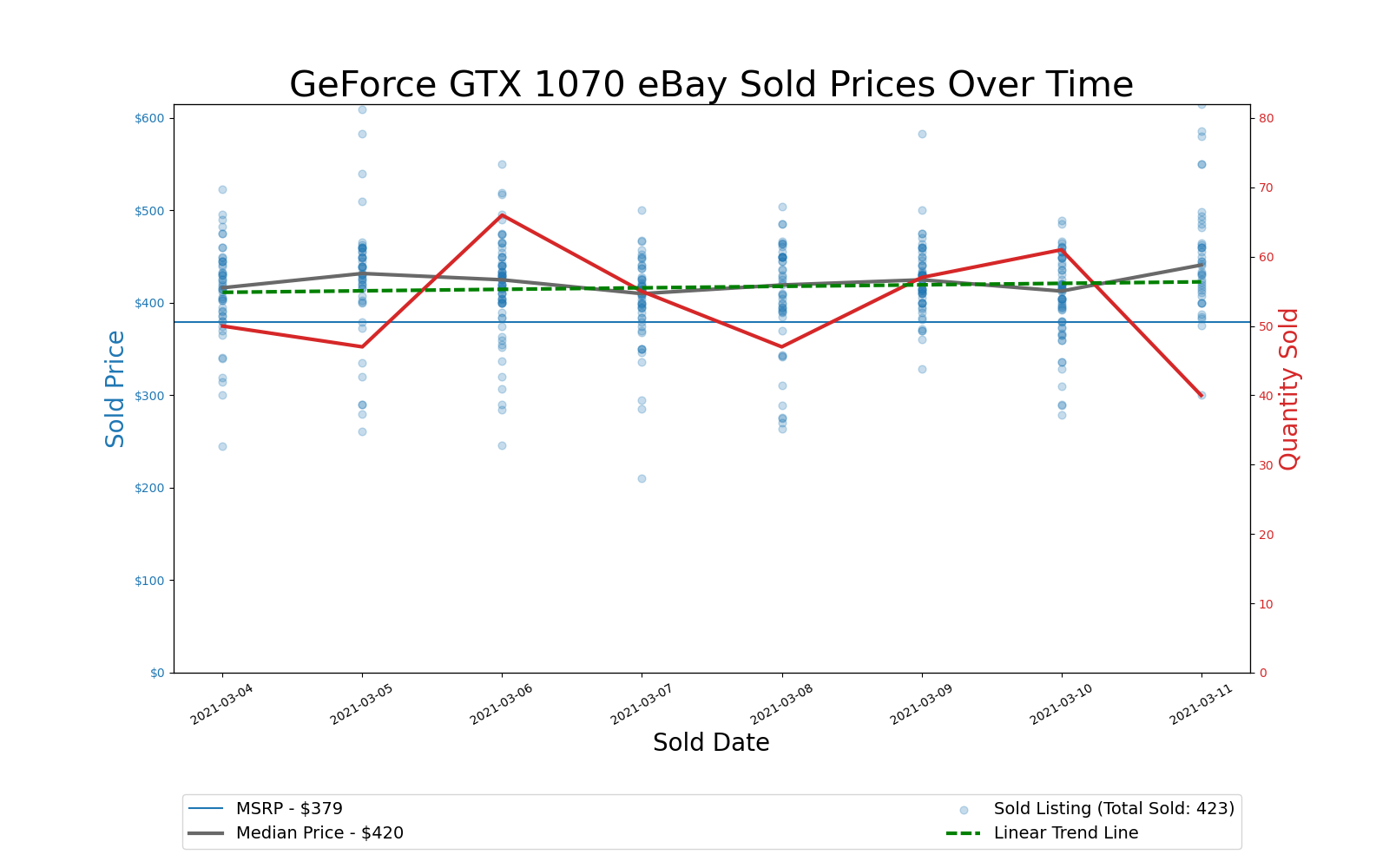


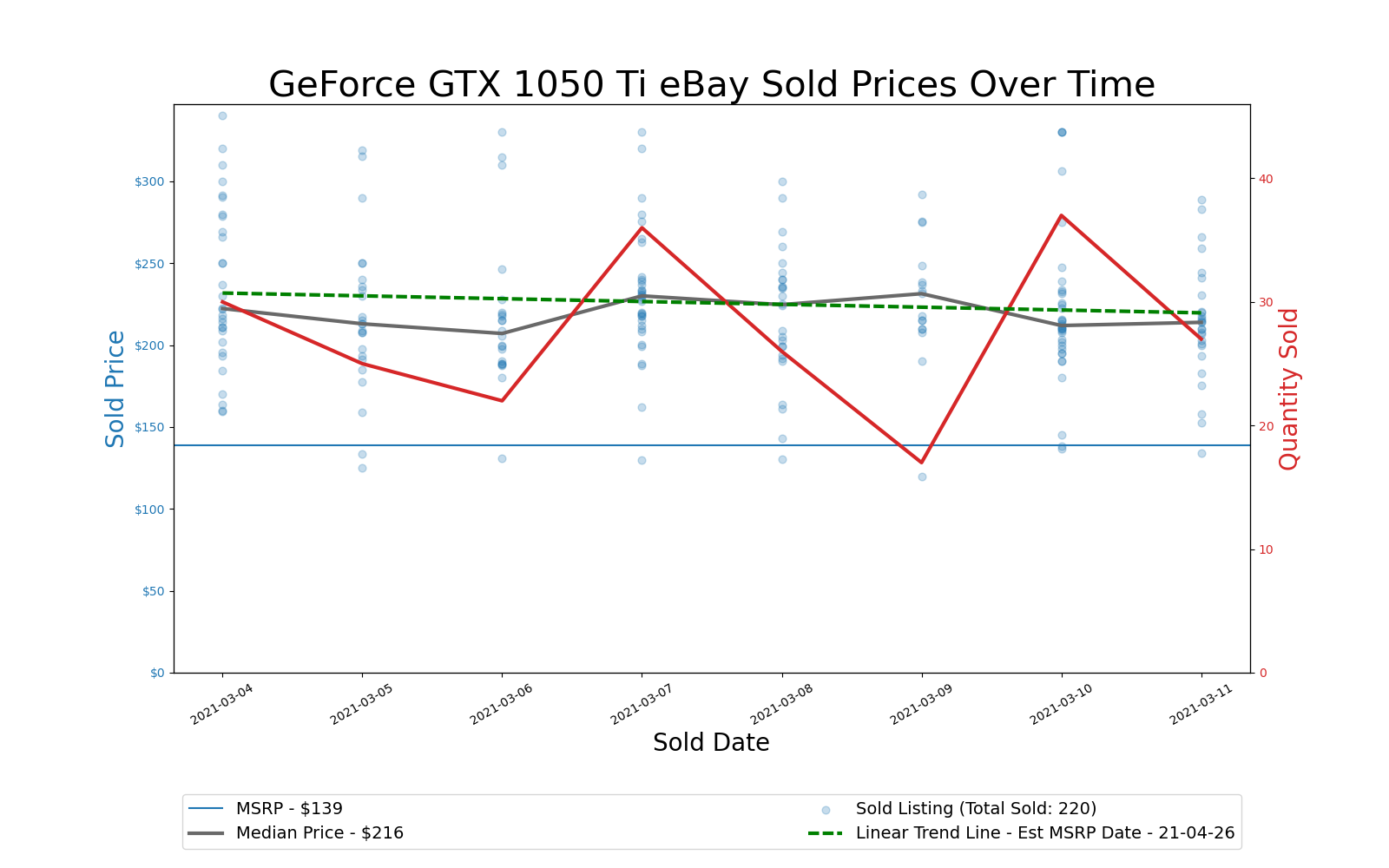
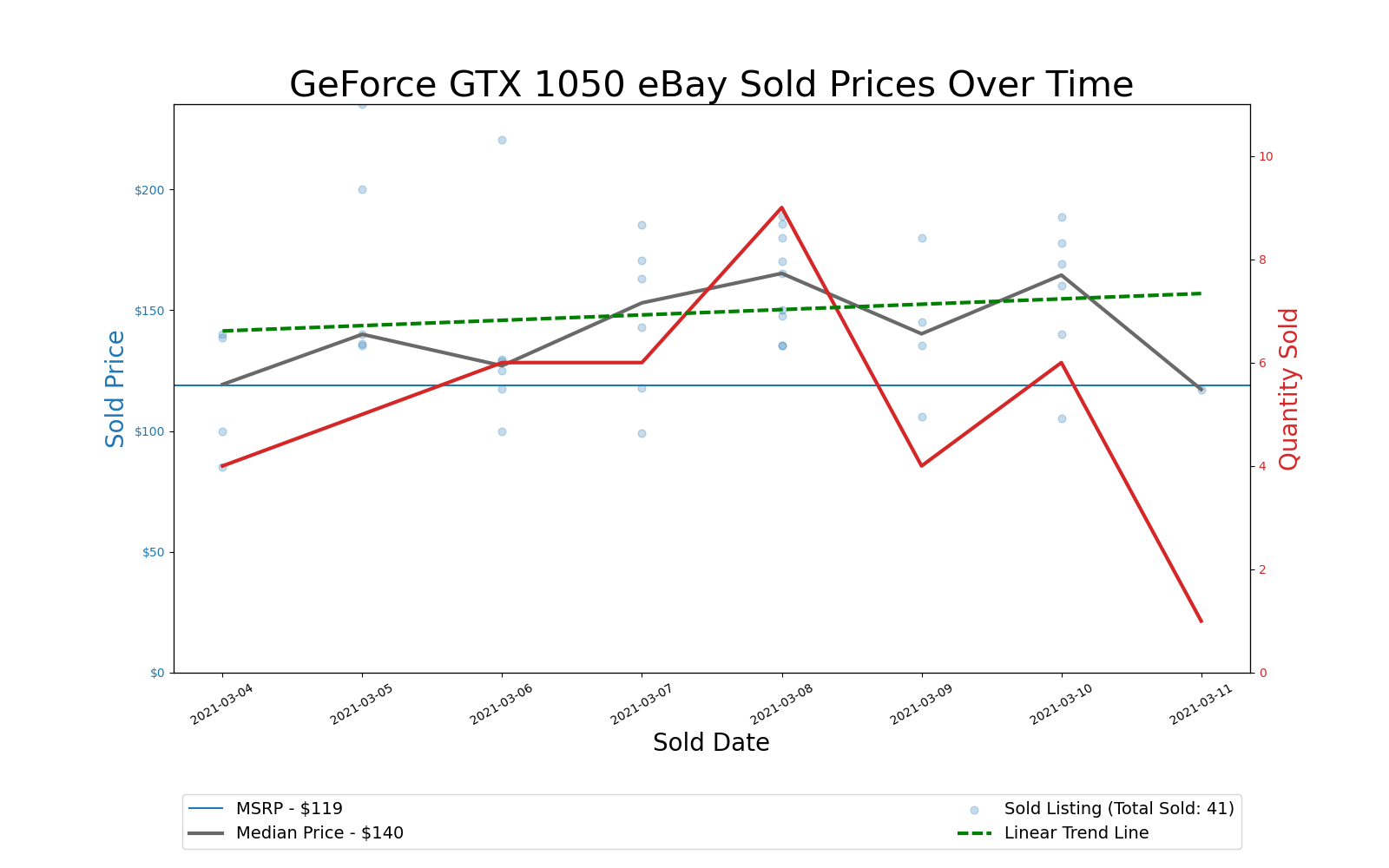

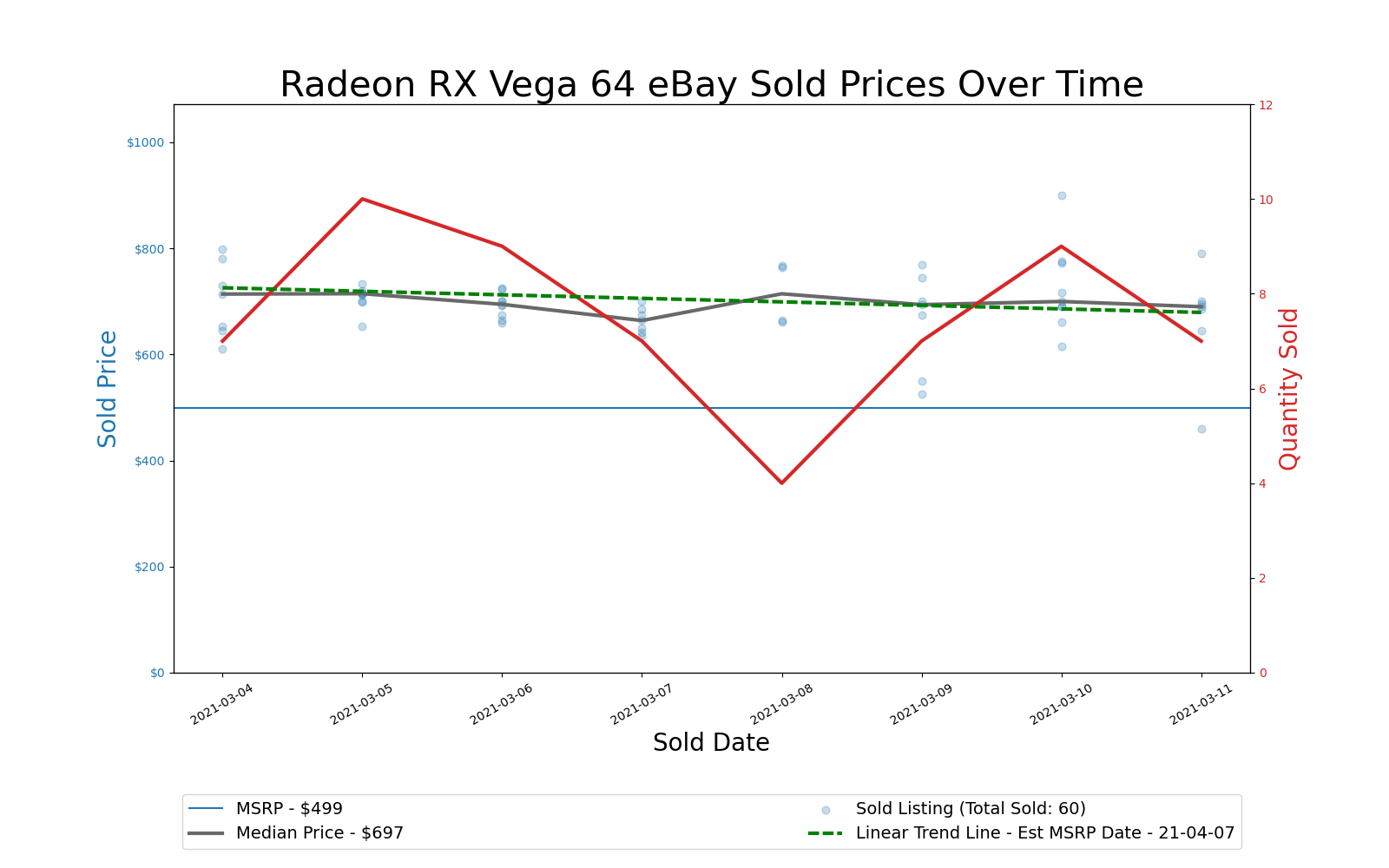












Even with cards that mostly launched three or four years back (or more), prices remain high. That's especially true of AMD's 8GB cards, which are all still double their launch prices on Polaris GPUs. The Vega cards also carry a significant price premium, with the Radeon VII at nearly triple its launch price. Miners, right?
Only cards like the GTX 1050 and 1060 3GB come close to MSRP, and the 4GB Polaris cards like the 570 and 580 aren't priced too badly. Well, until you remember they're three or more years old. Even the relatively ancient RX 400-series cards with 8GB command a premium.
If you just need a graphics card that can run games at modest settings, meaning 1080p medium or high, these old GPUs are the best bet right now. You're still looking at $200–$250, on eBay, but maybe you can find one for closer to $150 if you shop around.
Legacy GPUs and Titans

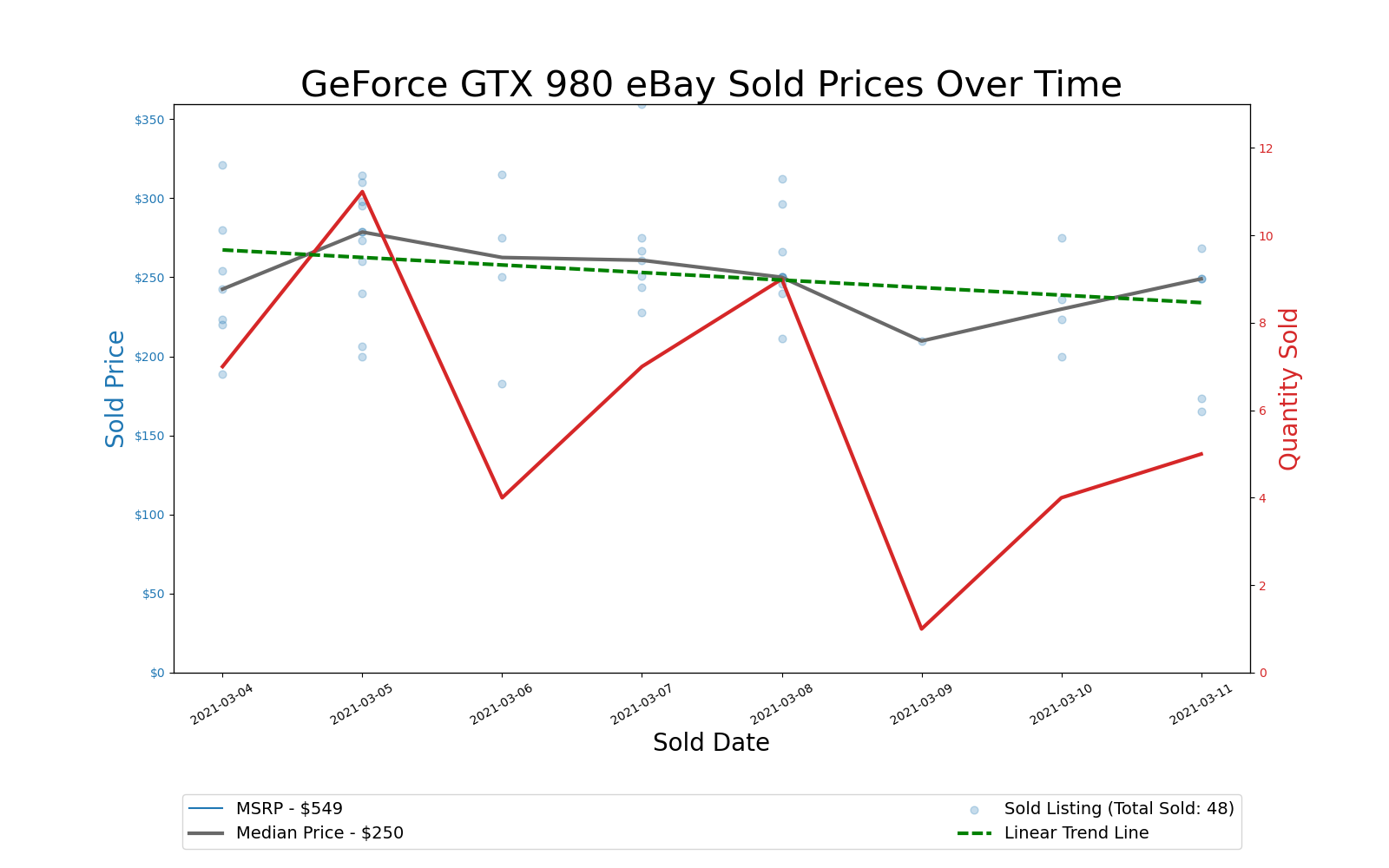




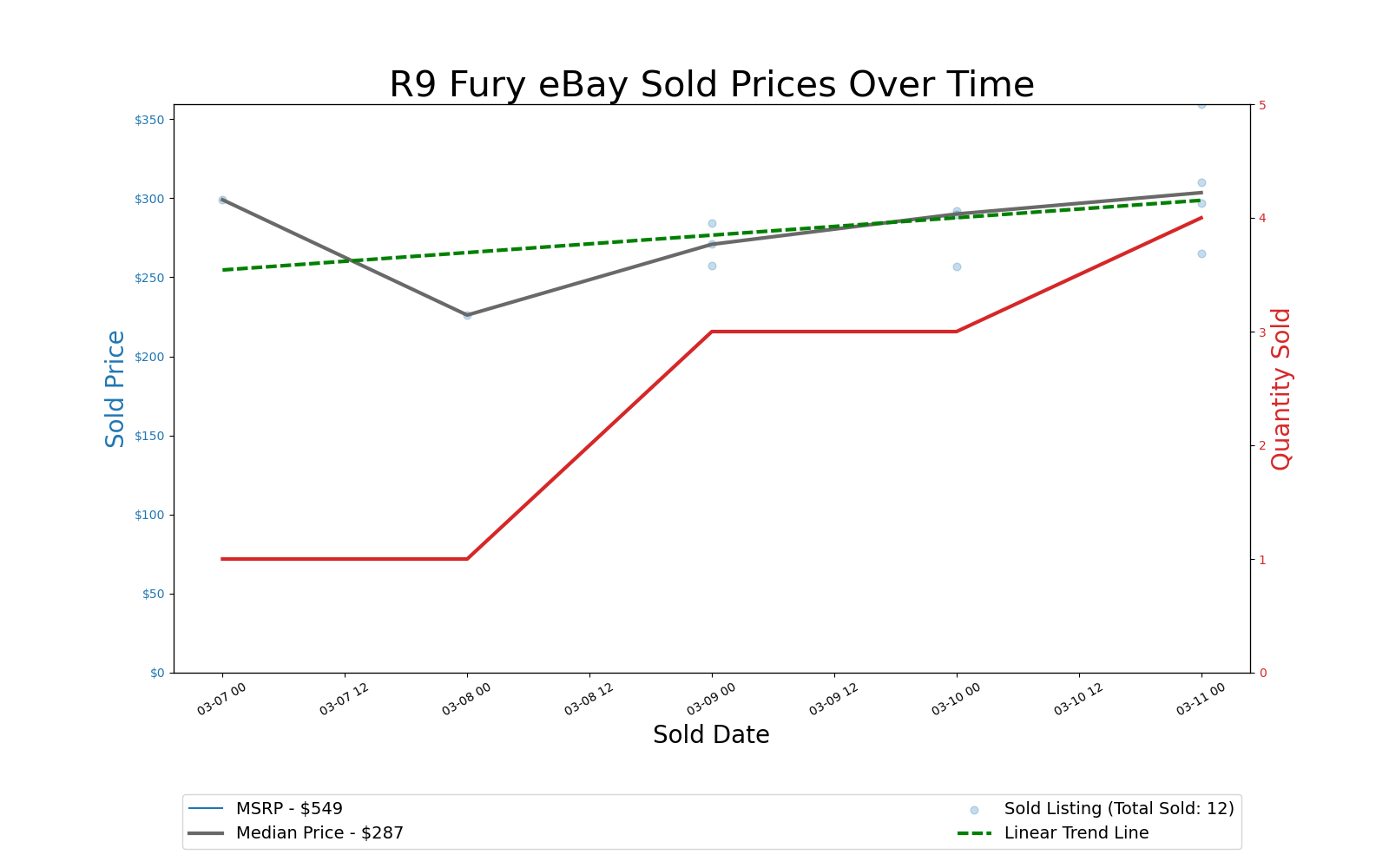







Last, we've lumped together some legacy GPUs along with Nvidia's four most recent Titan cards — the latter mostly being to satisfy our own curiosity. Not many people are buying or selling Titans, which makes perfect sense considering the price to performance ratio. (We didn't provide the charts, but we've also looked at Quadro cards, and most of those have tiny volumes as well.)
Nvidia's Maxwell series might also suffice in a pinch for modest gaming requirements. The 970 can't do 60 fps in the latest titles, but it's still fast enough to be playable, and at around $200 it's a reasonable choice to tide you over. The 960 also lands fairly close to the 1050 Ti in performance, and the GTX 950 comes close to the GTX 1050, for a lower price (but higher power requirements).
The GTX 980 and 980 Ti, along with AMD's Fiji GPUs (Fury, Fury X, and Nano) perform reasonably well, in the 1060 to 1070 range for the most part. Hawaii cards like the 390 and 390X that have 8GB still end up relatively close to their launch prices, sadly, and gaming performance is pretty underwhelming.
Weekly Summary: On the Rebound

After a slight dip in prices last week, many GPUs are trending back up again. That's not particularly suprising if you follow the cryptocurrency scene, as Bitcoin is back in the $56,000 range and Ethereum is around $1,775, both up over 15 percent in the past week. Will we get hit with another surge in crypto prices, leading to even more mining, or will this just be a temporary correction before things drop? That's the question.
We mentioned this as a possibility last week, though we didn't really hope it would happen. Mining and crypto prices still feel inflated, but then we thought the same thing when Bitcoin was at $10,000 so clearly we're not the best judges of value. All that volatility ends up being perfect for market manipulation and day trading, apparently.
With additional reports of various shortages popping up — mobile chips from Qualcomm have joined the 'party' — most analysts now predict supply problems and inflated prices to last throughout 2021. Here's hoping 2022 proves better.
Get Tom's Hardware's best news and in-depth reviews, straight to your inbox.

Jarred Walton is a senior editor at Tom's Hardware focusing on everything GPU. He has been working as a tech journalist since 2004, writing for AnandTech, Maximum PC, and PC Gamer. From the first S3 Virge '3D decelerators' to today's GPUs, Jarred keeps up with all the latest graphics trends and is the one to ask about game performance.
-
JarredWaltonGPU FYI, we're reorganizing some things and have a new forum thread here. Old comments were here: https://forums.tomshardware.com/threads/the-gpu-sadness-index-tracking-ebay-pricing.3689998/Reply
That is all. :cool: